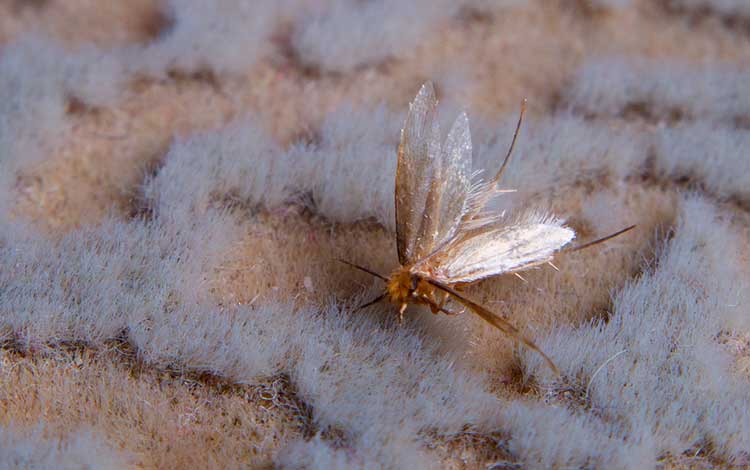How to Get Rid of Clothes and Carpet Moths
Last updated November 2024

The bane of Moroccan rug lovers and cashmere sweater fans, clothes moths feed on animal fibers—wool, silk, feathers, leathers—and they can ruin your stuff. Two types in North America: The casemaking clothes moth and the webbing clothes moth. Both are about one centimeter long and brownish-yellow or gray in color. You might see them flying around, but it’s their larvae that do the damage, grazing on your woolies in dark places (scarves in a closet, a carpet under a sofa).
Prevention is the best way to keep Mothra and her kids from trashing your home and wardrobe. Moths are attracted both by the keratin in natural fibers and any food or sweat that gets on them. So clean your sweaters at the end of each winter, then store them in well-sealed bins or bags. For an old-fashioned approach, add mothballs, which release high concentrations of the chemicals naphthalene and paradichlorobenzene (and a nasty odor) that kill moths and their larvae. But because these pesticide vapors can leak and be harmful to people, pets, or wildlife, you’re better off combating the critters with drycleaning and then quarantining. Another option: Kill any moths by putting cashmere sweaters and such in your freezer.
If you have natural fiber rugs or carpet, regularly vacuum, moving furniture out of the way to get to the dark spots underneath. Have wool or silk area rugs professionally cleaned every three to five years (or more often if you suspect an infestation); click here for our ratings of rug cleaning services.
People often learn they have clothes moths by the damage they leave behind. At that point—or if you see the little devils flitting around—you’ll need to track down where your infestation is and then clean (or pitch) the chewed-on items. Clothing should be drycleaned or washed; rugs must be shampooed (ideally by a professional who will apply a moth-killing poison before washing them).
You’ll want to thoroughly clean the area where the infestation occurred, wiping down closets, vacuuming near baseboards and underneath furniture. Empty your vacuum (or throw away its bag) outdoors to avoid another infestation from the larvae, which can survive for two to 30 months.
Pheromone bait traps (we like Dr. Killigan’s and MaxGuard) can help alert you to initial moth problems (and eliminate some, but not all of them) as well as help you monitor closets and rooms for future unwanted guests.


